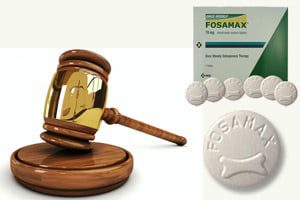
To enable plaintiffs and Merck & Co. Inc. time to work on a potential settlement, a New York federal judge delayed the transfer of hundreds of lawsuits that are part of a multidistrict litigation (MDL) brought over alleged jaw injuries tied to Fosamax. In an amendment to his August remand order in which District Judge […]
 To enable plaintiffs and Merck & Co. Inc. time to work on a potential settlement, a New York federal judge delayed the transfer of hundreds of lawsuits that are part of a multidistrict litigation (MDL) brought over alleged jaw injuries tied to Fosamax.
To enable plaintiffs and Merck & Co. Inc. time to work on a potential settlement, a New York federal judge delayed the transfer of hundreds of lawsuits that are part of a multidistrict litigation (MDL) brought over alleged jaw injuries tied to Fosamax.
In an amendment to his August remand order in which District Judge John Keenan ordered the lawsuits returned to their home courts beginning November 1st, the transfers will now begin on December 2nd, according to Law360. Subsequent transfers will be made on the first business day of each month until the remaining case are sent out of the MDL.
Lawsuit allegations include that Fosamax users developed osteonecrosis of the jaw—known as “Dead Jaw.” Almost 1,000 lawsuits remain pending; five bellwether trials and general expert discovery have taken place, according to Law360. While a plaintiffs’ steering committee was seeking a transfer delay, saying it would be in their best interests if the transfers began after November, Merck sought to keep to the planned MDL “wind-down,” stating that its review of the pending claims showed the drug maker that most were baseless.
In August, the steering committee proposed that Judge Keenan send 300 cases back to their home courts every four months, which averages 75 cases monthly, according to Law360. Merck described the committee’s plan as a “dump” that would scatter the cases nationwide with no concern to their strengths and weakness, and proposed, instead, that case-specific fact discovery be conducted on the 100 oldest cases during a six-month period prior to implementing the transfer, Law360 wrote.
Judge Keenan decided to transfer 200 cases monthly out of the MDL and into their home courts beginning November 1st, which was a faster pace than the plaintiffs proposed.
According to Merck, many claims involved plaintiffs with either no record of an osteonecrosis of the jaw diagnosis; no record of having used Fosamax for more than 12 months, or whose injury apparently took place more than three years after they had stopped taking Fosamax, according to Law360. Merck said it believes transferring the cases back to their home courts “is now the only means by which plaintiffs will be compelled to dismiss their non-viable cases,” pointing out that meaningful settlement negotiations would not occur until the cases it deemed as being meritless were removed from consideration, Law360 reported.
Research has revealed that risks for developing ONJ following dental extractions raises significantly in patients taking bisphosphonates, such as Fosamax. Risks increase dramatically when Fosamax is received intravenously, according to the study, which was published in the International Journal of Oral and Maxillofacial Surgery. The FDA ordered that ONJ warnings be included on Fosamax, and other bisphosphonate, labels in 2004. It is thought that osteonecrosis may develop when bisphosphonates, including Fosamax, prevent the body from repairing microscopic damage that occurs in the jawbone, such as what is seen during routine dental procedures.
Fosamax and other bisphosphonates have been associated with a number of other serious side effects. For example, in October 2010, the FDA asked that manufacturers of bisphosphonates that are approved for the treatment of osteoporosis, including Fosamax, include information to the “Warnings and Precautions” section of the drugs’ labels that describes the risk of atypical thigh fractures after research linked long-term use of these drugs to that particular side effect. Also, recent studies revealed that long-term use of oral bisphosphonates may increase risks for patients developing esophageal cancer.


